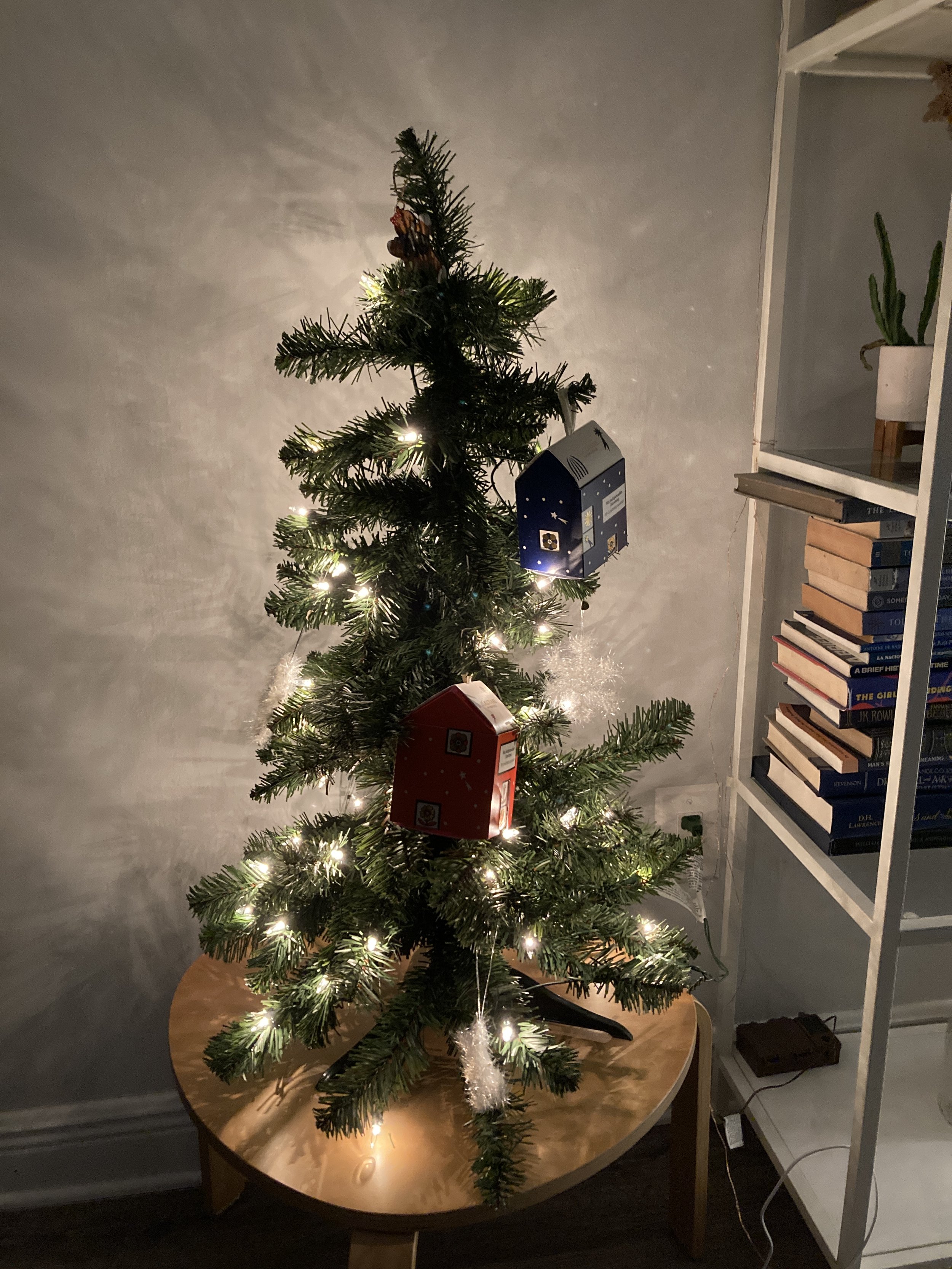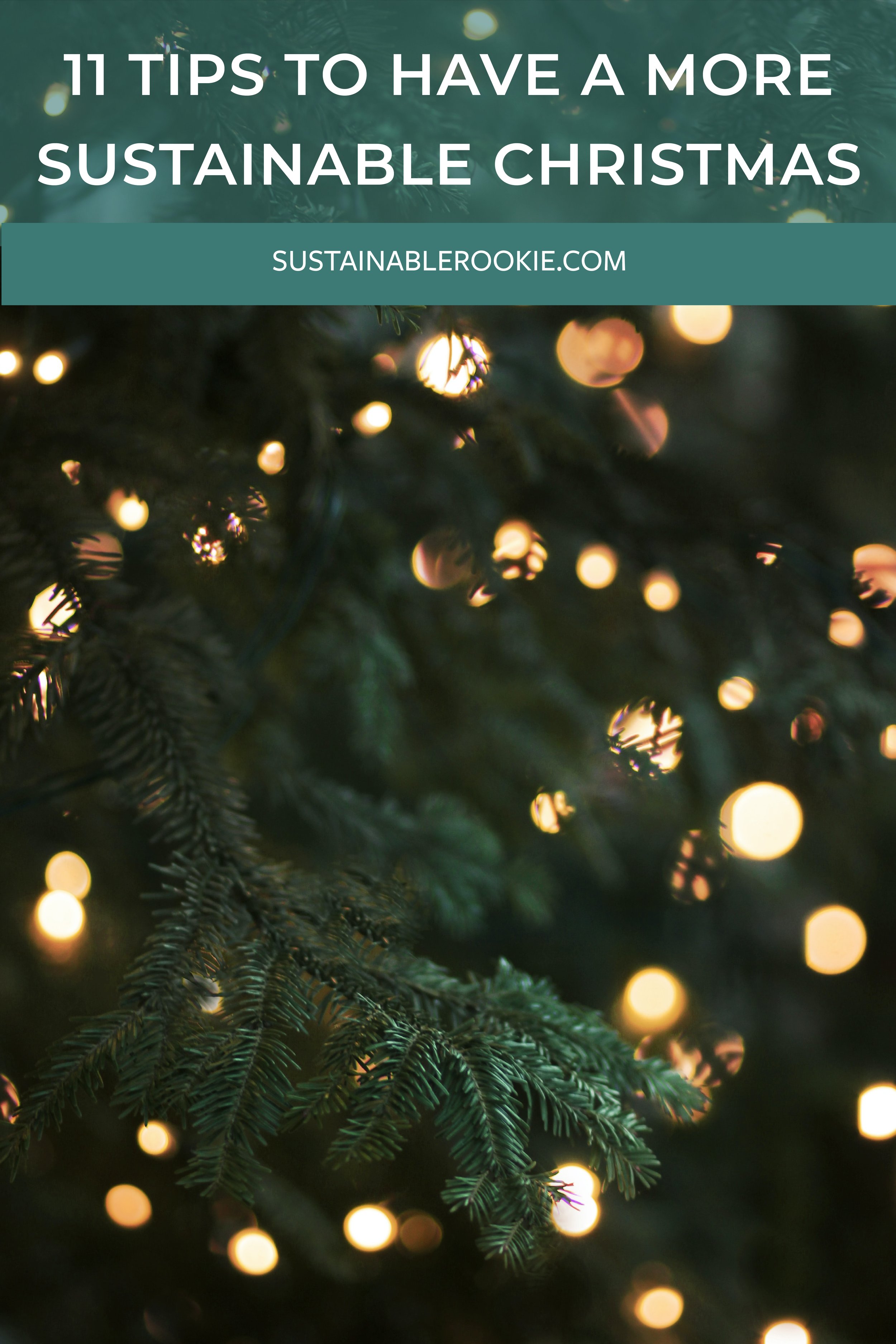11 Tips to Have a Sustainable Christmas
It’s the most wonderful time of the year! Christmas has always been the holiday I look forward to the most. Those special days are some of the sharpest recollections I have from my childhood, even considering how bad my memory is. I remember adults making us search the sky for the sleigh, telling us they were hearing noises coming from the roof, or my uncle dressing up as Santa to put the gifts under the tree.
As I grew older, the myths were dismantled and the costumes stored in the closet, but the spirit never perished. Even when my Christmas days in Buenos Aires involved bikinis, mosquitoes, power outages, and more than eighty-degrees-weather, there was always something cozy and warm about these last days in December. This feeling isn’t inherent to the weather or to wearing a sweater. On the contrary, it’s carved in its very significance, something that goes beyond the surface.
Christmas means family, as Kevin had to learn by force in Home Alone. It’s about people, caring for them, and gratitude, as writers such as Charles Dickens and Dr. Seuss have tried to teach us. It means love in all shapes, as I remind myself every time I rewatch Love Actually.
Now, living in Miami, the picture-perfect Christmas scenario from movies and books is still a chimera, but at least the heat is a little less harsh, and the probability of wearing a sweater increases! Even in the other hemisphere, the meaning of Christmas remains the same.
What has changed throughout the years is not the essence of this Holiday, but my perception of it. As I continue my journey to become more sustainable, reimagining Christmas in a way that is more respectful of the environment, is inevitable; and to make your journey easier for you, in this post I’ll share what I’ve learnt so that you can enjoy Christmas more consciously as well.
My sustainable Christmas tree, which I bought secondhand. Ornaments are also thrifted, except for the two cardboard houses which were a gift from my friend in NYC.
HOW TO HAVE A SUSTAINABLE CHRISTMAS
1. CHOOSE SUSTAINABLE CHRISTMAS GIFTS
Gifts have become an emblem of Christmas. However, something that was once a conscious and meaningful activity, somehow turned into a compulsive and mindless shopping spree. In the U.S., consumers spend around $1000 on gifts during this season. Somewhere along the line, the act of giving, which is something abstract and deep, became mere numbers.
My tip to be more sustainable this Christmas is to use gifts as a way to connect with another person. Don’t look at it as numbers and bills: “Oh, I have to at least spend $100 in Carl”. No! Think about what Carl likes (whoever he is), or what brings both of you together. The gift is about the other person and about showing them you’re grateful for their presence in this world. A gift can be something symbolic since it’s not about materialism. You can make a gift with your own hands, for instance, but make it with love, care, and meaning.
My favorite sustainable gifts are experiences. When the moment comes, you can just give the gift receiver a card disclosing what your gift is, or you can just tell them. Paddleboard or pottery classes, a concert, dance or singing lessons, two tickets to go to the cinema together, preparing a surprise picnic anything that will enrich his mind, soul, or body, or that will help you connect even more (if the gift involves doing the activity together), and obviously that is in your budget.
Another eco-friendly Christmas gift idea is choosing something special from a sustainable brand. You can see some sustainable gift ideas for her here, and some sustainable gift ideas for him in this link. Remember to consider the other person’s personality and interests when choosing it (not yours) and choose something that they will use for years to come, which is a very important point to consider when living more sustainably. Other options could be regifting or choosing a vintage/secondhand present.
2. WRAP GIFTS SUSTAINABLY
Whether you choose to give a handmade gift, a secondhand one, or something cute from a sustainable brand, you may want to wrap it yourself. This allows you to put even more time and care into your gift–which is a part of this experience– and to personalize it.
Only during the period between Thanksgiving and New Year’s, Americans throw away 25% more trash than any other time of the year, which amounts to 25 million tons of garbage.
The good news is, there are many ways to wrap your gifts more sustainably! My favorite option is to save bags and gift wraps from presents I have received. I store them until the time comes when I need them. Other ideas are to reuse shipping or shoe boxes, use old newspapers or magazines, reuse fabrics (try the furoshiki method), reuse scraps of papers you have at home, repurpose mason jars, reuse old maps, or recycle paper.
3. BUY A SECONDHAND CHRISTMAS TREE AND ORNAMENTS
Back in Buenos Aires, in the 90s, when I was about 5 or 6, my parents bought a plastic Christmas tree. You can imagine that sustainability wasn’t even a word for the common person. However, we still have that tree, more than 20 years later. Using what you have is always the most sustainable choice!
In Miami, however, I didn’t have a tree for the first four years I lived there. I tried to avoid it, because of storage space and sustainability. Recently, my urge to have one ignited as never before, and I realized that a home without a Christmas tree was ok, but a home with one was even better! To make it a sustainable affair, I went to Goodwill and bought a secondhand plastic Christmas tree that is small enough to be easy to store afterwards. It came with lights, and I bought simultaneously a box with 4 secondhand ornaments. The other ornaments are handmade with repurposed toilet paper tubes! These are great ways to have eco friendly Christmas decorations.
Instead of buying real trees or new plastic trees, choose a secondhand one from your local thrift store, and support a circular economy. Remember you can also create your own version of a Christmas tree, which may include decorating a plant you have at home, in replacement of a tree, or make one with photos you have at home.
4. ADD THE SUSTAINABILITY FACTOR TO YOUR CHRISTMAS DECORATIONS
We can all agree that a Christmas tree is the main character during the festive season. However, sometimes it needs company! To decorate your home or office more sustainably, don’t buy anything that’s new. Like tip #3, your safest bet for the environment is to use last year’s decorations. Since I moved to the U.S., I noticed many people throw away decorations after a Holiday is over and buy them all over again the following year. That’s insane in levels I fail to understand! Disposability is not a word in sustainable and conscious living.
Fight against this mindset by using the things you already have, making your own decorations with upcycled objects, or buying secondhand décor at places like Goodwill (I mention this because when I went to purchase my thrifted tree, I saw hundreds of Christmas décor, as well as clothes!).
5. SERVE PLANT-BASED FOOD ON CHRISTMAS AND CHRISTMAS’ EVE
I remember spending Christmas Eve in New York more than 10 years ago with my family. We were excited about the clock hitting twelve, and everyone yelling: “Merry Christmas!”, because that’s what we do in Argentina. December 24th is about getting together, eating a wide variety of food, and toasting when the clock’s hands reached number 12. So we went to Rockefeller Center, where the big Christmas tree is, and waited for midnight. Yet, nobody wished anybody a Merry Christmas. Everyone kept on walking their dogs, staring at the tree, or trying to stay warm.
This is just anecdotical. What I mean is that in Argentina we got together to eat on Christmas Eve and Christmas Day as well (the leftovers). We kept this tradition with my Miami family, although I know traditions in the U.S. are a bit different, but I’m sure food is included in some way!
Plant-based diets are better for the environment, and are also crucial in helping fight climate change. The food we eat has a much bigger environmental impact than we can imagine. Incorporating it daily is the goal, but if you aren’t there yet, the holidays are a great way to start from. To make your Christmas gathering more sustainable, serve plant-powered food, to be gentler with the environment and the animals. Perhaps you can try my delicious vegan shepherd’s pie?
6. AVOID BUYING CHRISTMAS CARDS
I love including cards in gifts. They add a personal touch and a kind message to go with your gift (or they can be a gift in itself). I save every card I receive, and I love to read them many years after.
Nevertheless, Americans purchase approximately 6.5 billion greeting cards each year. In the UK alone, around a billion Christmas Cards are sent annually. These numbers are worrisome because cards, whether they are made of paper or plastic, at that volume have a negative impact on the environment. To start with, they promote deforestation, because you need paper to make those cards. On the other hand, most cards aren’t only made with paper, but have a form of plastic, glitter, or foil, that makes them impossible to recycle or biodegrade. If you send these cards by mail, you also need to consider the carbon emissions this involves.
To make your Christmas more sustainable, make your own cards! You probably have scraps of paper at home you can reuse instead of throwing them away. Another eco-friendly Christmas card alternative would be to make your own recycled paper or choose greeting cards that are made with recycled and recyclable paper. An additional option I love is buying seed cards, which means they can be planted and turned into breathtaking wildflowers!
7. PLAY SECRET SANTA IF YOU HAVE A BIG FAMILY
Back to the gift-giving part of Christmas… I wanted to include this idea here in case you have a big family. One of my closest friends has 5 siblings, and each of them has a partner and kids. Imagine giving each of them a gift! That would not only be financially hard (or even impossible), but also super unsustainable.
For these circumstances, you can arrange a Secret Santa, so that each adult gives one or two quality gifts, instead of focusing on quantity. Not only will it be more sustainable, but you will also enjoy the fun of trying to find out whose gift you are receiving!
8. USE SOLAR-POWERED LED LIGHTS
IWhether you want to decorate your house or your Christmas tree, you have probably thought about lights. Let me start by saying that the most sustainable choice would be to not use them at all. If abstinence is an option for you, choose it. The most environmentally friendly object is the one we don’t buy in the first place.
My blog, however, is for eco-experts as well as for rookies! For this reason, I love to give you options, so that you can find the one that best suits your needs and try to make more sustainable choices little by little, or all at once.
Having said so, buying secondhand lights would be a conscious choice. Once again, I’ll mention Goodwill, because even though I didn’t buy them, I spotted Christmas lights for sale at their stores. Another alternative would be to use solar-powered LED lights. Solar energy is renewable and helps reduce greenhouse gas emissions that are typical of electricity. LED lights are more efficient, have a longer life, and reduce light pollution.
9. BUY LOCAL, ORGANIC, AND IN BULK WHEN POSSIBLE
In addition to serving plant-based food, try buying local and organic food, and buying in bulk if possible. Locally grown food helps reduce environmental impact by reducing the miles traveled, and also benefits the local economy. On the other hand, organic farming is more sustainable because it avoids pesticides, fertilizers, herbicides and fungicides that affect biodiversity, soil quality, and pollute water. Lastly, buying in bulk is a more eco-conscious choice because it allows you to use reusable bags instead of plastic. It can also help you save money.
10. SAVE LEFTOVERS
A last tip to make your Christmas dinner or lunch more sustainable is to save leftovers. As I told you at the beginning of the post, my Christmases growing up involved getting the family together again to eat the leftovers we had from Christmas Eve. That could be a great option to avoid food waste, which is terrible for the environment, not to mention your wallet, and it’s also morally wrong.
Another alternative to add the eco-friendly factor to Christmas is to ask guests to bring containers for leftovers. This way, everyone can rejoice in not cooking the next day, and save the environment at the same time. You can also freeze leftovers and eat them during the following weeks.
11. CHOOSE A SUSTAINABLE CHRISTMAS OUTFIT
My last tip to have an eco-friendly Christmas is to choose a sustainable outfit to wear for the occasion. Each person’s definition of a Christmas get-together will be different. Some may celebrate it in a fancy way, while others will enjoy this holiday in their pajamas. Either way, you can always dress more sustainably!
If you’re a pajama-celebration-kind-of-person, just wear the PJs you already own. Otherwise, as I mentioned before, Goodwill and other thrift stores sell many a Christmas sweaters, pajamas, and socks, among other garments, which you can buy secondhand and save for next year. Remember that Christmas-themed clothes are only used once a year, so buying new things may not make sense for you or the environment.
For those on team ‘fancy celebration’, my advice is similar. Always choose first the clothes you already have. Maybe there is a way in which you can give a new life to clothes you thought had already reached the end of their lives. However, if you want to wear an elegant dress, for example, and you don’t own one, ask your friends to lend you one. Borrowing and swapping (and stealing your sister’s clothes) are sustainable! The next alternatives would be to buy secondhand (maybe a vintage store has something unique you can wear) or buy from sustainable brands, to shine brightly and sustainably on Christmas!
What is your favorite sustainable idea to make Christmas more sustainable? Let me know in the comments.
If you’d like to know more about sustainable living–including but not limited to eco-friendly holidays–please don’t forget to subscribe to my newsletter to read my future posts!








